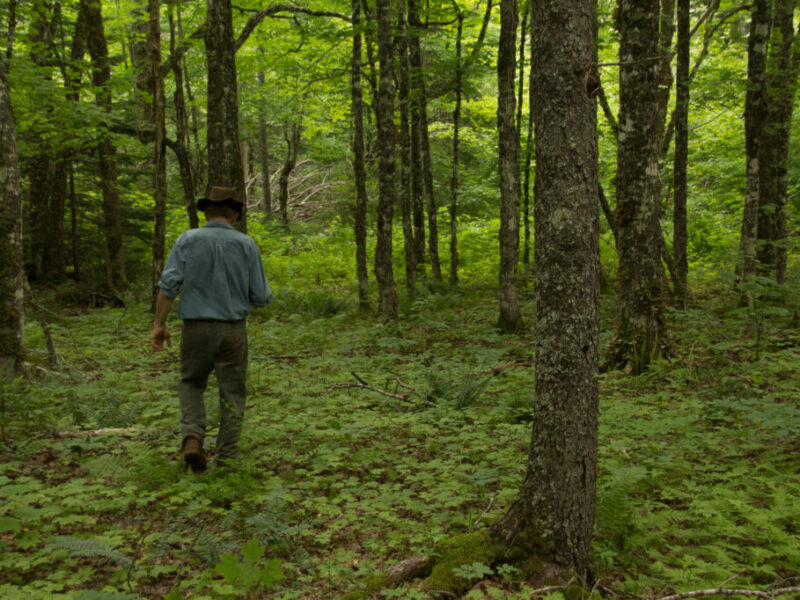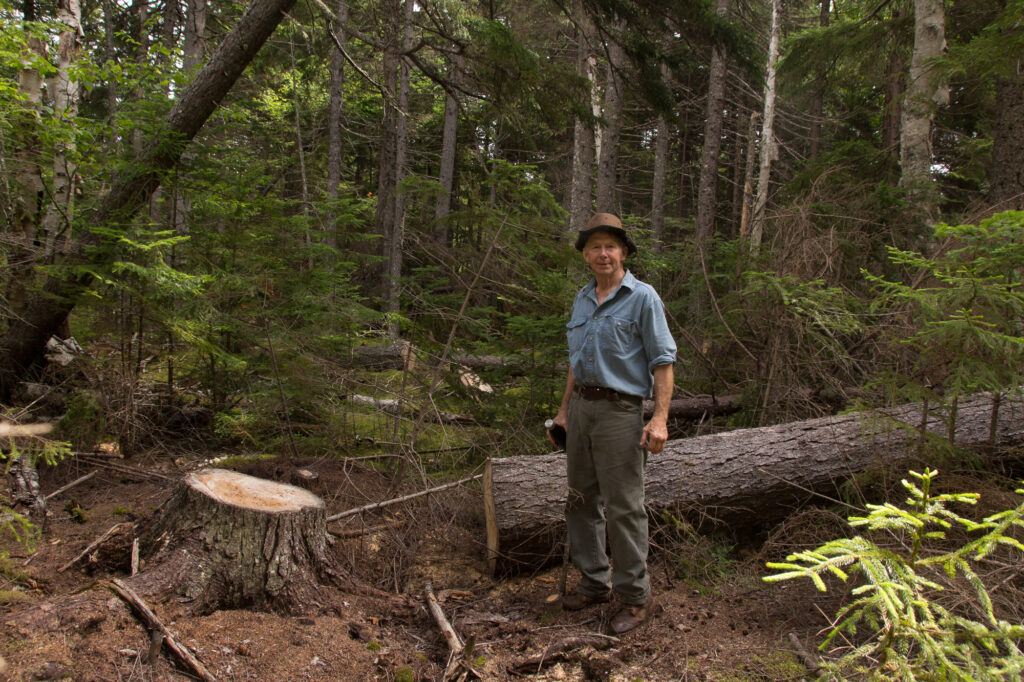
Saving the forest for the trees
(Excerpt, Atlantic Business Magazine, Sept/Oct 2023)
Fire prevention starts with forest protection; lessons in woodlot management
Mike Spence leads the way through the forest, pointing out landscape features and individual trees, mushrooms and woodland flowers. Sunlight filters through the leafy canopy, moss cushions the ground, water tumbles over roots and stones in a nearby brook. We spot tracks from a doe and fawn, a moose and bear.
“We’re trying to maintain the forest that’s been here for 200 years,” he said. “We have maple, yellow and white birch, spruce, oak, hornbeam, ironwood and ash…”
Spence knows every foot of his 900-acre property as well as he knows his own capabilities. The shaded softwood stands, the mixed hardwoods, the places that hold snow in winter, the clean water springs, the bogs and small brooks, the beaver pond.
This as close to an original Wabanaki-Acadian forest as you might find these days, but the Baie Verte, N.B. woodlot owner is starting to see worrisome change. He can’t work in the woods as late in spring as he once did because frost leaves the ground earlier. Temperatures are rising. Water levels are dropping. Bogs are shrinking. He wonders what the future holds.

Baie Verte, NB woodlot owner, Mike Spence, stands beside a red spruce damaged during Hurricane Fiona.
He navigates to the pale stump of a red spruce almost two feet across. A few feet away, its trunk disappears into a tangle of branches. “This tree is about 200-years-old. I’d never have cut it, but the top came down in Fiona.” He pauses. Removes his hat, swipes his hand through his hair before replacing it. Scans the length of the trunk.
“I’ll save this for something special. We’ll not see trees like this again.”
The hurricane that wreaked so much damage across the Maritimes last September funneled through like a tornado, toppling 20-30 of the oldest, tallest trees, but leaving adjacent areas unscathed. He’d rather decide which trees to cut—choosing the imperfect, weak, damaged or over-mature, all the while being watchful not to disturb nests or dens—but nature had other ideas.
He admits logging is hard for a tree-hugger, but tries for optimism. It’s opened up the canopy. It’ll leave room for something else to grow. Salvaging the blowdowns and damaged trees will provide a ready supply of timber in the coming months.
 He knows climate change is upon us and Fiona was a portent of more and bigger storms to come, but the wildfires fueled by early drought and high winds that devastated Maritime forests and neighbourhoods before the hardwoods had leafed out this spring are a different demon. As the climate continues to heat, he expects the tragedy will repeat.
He knows climate change is upon us and Fiona was a portent of more and bigger storms to come, but the wildfires fueled by early drought and high winds that devastated Maritime forests and neighbourhoods before the hardwoods had leafed out this spring are a different demon. As the climate continues to heat, he expects the tragedy will repeat.
For decades, he’s managed his land well—it now offers the best resilience against the impacts of climate change, and his stands of multi-aged hardwoods with their leafy understory create a natural barrier to fire—but he can only do so much.
“I can’t control what goes on outside. We’ve had clear cuts all around us. Ours is the only block of woodland that hasn’t been cut into,” he said. “How do you protect against that?”
(Read the rest…Atlantic Business Magazine, Sept/Oct 2023)




